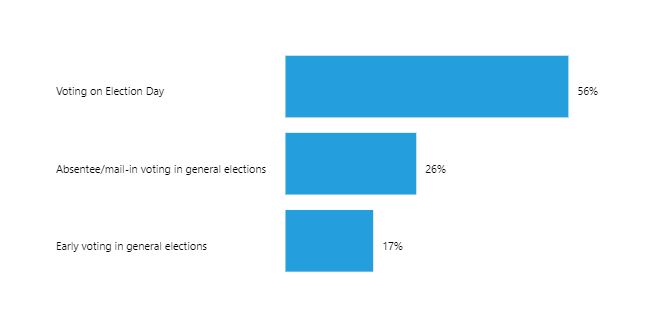Health
How COVID-19 is changing primary voting—and the November election

The rate of new COVID-19 cases confirmed daily in the US hit an all-time high in early January, with the seven-day average peaking at just over 246,000 cases per day on January 8. By January 31, the seven-day average had dropped 41% to 145,000 per day. January was the second-worst month for new confirmed cases, with a total of 6.1 million, down 4% from the 6.3 million cases reported over the course of December.
Most states experienced declines in the monthly case rate per capita, with the steepest declines occurring in Alaska, South Dakota, Tennessee, Idaho, and North Dakota. Arizona had the highest case rate in January, with 3,273 positive cases per 100,000 residents. For comparison, Arizona's case rate also led the nation in July, when the state had 1,303 positive cases per 100,000 residents. Two other states — South Carolina and California — had January case rates exceeding 2,500 positive cases per 100,000 residents.
Monthly new confirmed COVID-19 cases per 100,000
While the US reported fewer new cases in last month than in December, the monthly death toll increased from 74,854 in December to 94,185 in January. At the end of January, the US had a cumulative 433,401 known COVID-19 deaths.
Thirty-one states recorded more than 1,000 deaths in January, up from 25 states in December. California recorded 15,311 deaths, up 148% from 6,171 deaths in December. While California accounts for 12% of the US population, it made up 16% of COVID-19 deaths in January.
Los Angeles County alone recorded 6,591 new deaths — 43% of California's death total, though the county accounts for only 25% of its population.
In late January, President Joe Biden said his goal is getting to 1.5 million daily vaccinations. Since Inauguration Day, the US has averaged 1.3 million shots every day.
Overall, 32.2 million doses have been administered to 26 million people as of February 1, meaning that one in 13 Americans have received at least one shot. About 5.9 million people (1 in 50 Americans) received both required doses for inoculation.
West Virginia has the highest vaccination rate of any state. Nearly 11% of people in the state have received at least one dose, with almost 4% completing both shots. On January 29, West Virginia Gov. Jim Justice said the state was the first to complete vaccinations in all nursing homes and assisted-living facilities.
The latest version of the Census Bureau’s Household Pulse Survey, which measures household experiences during the pandemic, includes questions about vaccination status and intent to get fully vaccinated.
Based on the latest questionnaire fielded from January 6 to January 18, 53% of adults “definitely” plan to get vaccinated or have already received full vaccination. Forty-five percent either said they were less than absolute that they would get vaccinated (responding “probably,” “probably not,” or definitely will not”) or reported that they’d already had their first shot and don’t plan to receive a second.
There are demographic differences between people seeking vaccinations and those who aren’t. Fifty-one percent of adults under 25 said they were uncertain or won’t get fully vaccinated, compared with 27% of the 65 and older population who said the same.
Sixty-five percent of Black, not-Hispanic adults were less than certain about getting vaccinated compared with 41% of white, non-Hispanic adults and 31% of Asian, non-Hispanic adults. Household income played a factor, too, with 57% of adults in households earning less than $25,000 saying they were uncertain about getting or definitely won't get fully vaccinated. Twenty-one percent of adults in households earning over $200,000 said the same.
As of December 15, the US had 8.5 million fewer jobs than it had in February. The US had also cumulatively reported 16.4 million confirmed COVID-19 cases and 298,849 deaths.
Each state made up a different proportion of these nationwide totals, sometimes differing from the state’s share of the population. For example, California had 1.5 million fewer jobs between February and December, accounting for 18% of the jobs lost nationwide though its 39.4 million residents account for 12% of the US population.
Illinois, which is home to 4% of the US population, had 5% of the COVID-19 cases through December 15. In all, 28 states had a higher share of cases than their share of the population.